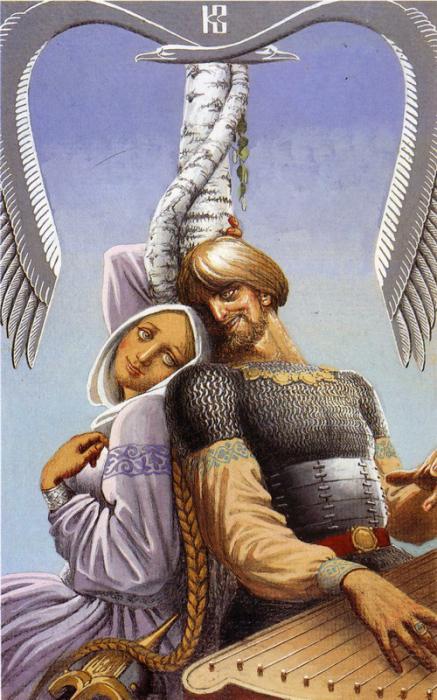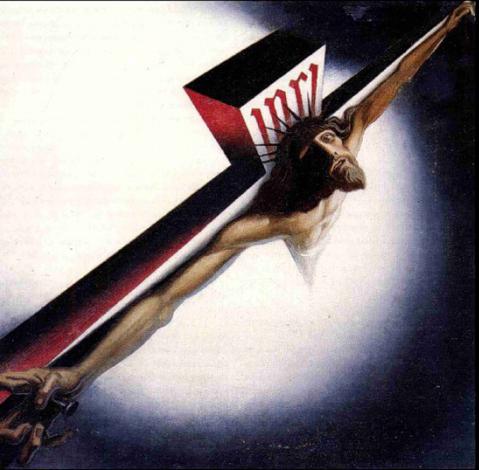Vasiliev Konstantin Alekseevich, whose paintings will be considered in this article, is not one of the famous artists whose works are sold at auctions for fabulous amounts. However, this fact does not at all diminish his merits to Russian art. During his short life, the painter, also known under the pseudonym Konstantin Velikoross, left about 400 works, among which the most interesting are paintings on fairy-tale and historical subjects, portraits, landscapes, graphics, canvases in a surreal style.
short biography
Soviet artist Konstantin Vasiliev was born in 1942 in the German-occupied city of Maykop (Krasnodar Territory). His father Alexei Alekseevich is a native of St. Petersburg, an engineer, a lover of literature and nature. The mother of the future artist Shishkina Klavdia Parmyonovna was from the kind of Saratov peasants.
After the war, the boy with his parents moved to Kazan, and in 1949 - to the picturesque village of Vasilyevo located below it. Since childhood, Konstantin was fond of drawing, showed an unprecedented talent for his age in writing watercolor paintings. For four years (from 1957 to 1961), he studied at the Kazan Art College. After graduation, he taught painting and sketching in high school, and also worked as a graphic designer.
Appeal to Surrealism and Expressionism
Like many painters, for some time Konstantin Alekseevich Vasiliev was in search of his artistic style. The paintings of his early period resemble the surreal works of Picasso and Dali. These include the "Apostle", "String", "Ascension". Carried away by surrealism, Vasiliev quickly lost interest in him, believing that with his help it was impossible to express deep feelings on the canvas.
The next stage of his work, the Soviet artist associated with expressionism. During this period, such paintings as “The Icon of Memory”, “Sadness of the Queen”, “Music of Eyelashes”, “Vision” come out from under his brush. However, soon the master refused expressionism, considering this trend in art superficial and incapable of expressing deep thoughts.
Creating paintings in the Russian style
The artist Konstantin Vasiliev, whose biography and work are described in this publication, could only really be revealed after he began to paint landscapes of his native land. Nature inspired him to create paintings in the native Russian style. Gradually, he began to complement landscapes with images of people. In parallel, Konstantin Alekseevich became interested in the study of historical literature, Russian epics and myths. The more he learned about the past of his people, the more he wanted to reproduce scenes from his life on canvas. It was here that the artist managed to maximize his talent. Drawing inspiration from Russian culture, Vasiliev writes his most famous works: Northern Eagle, Waiting, A Man with an Owl. Konstantin Alekseevich became famous as a battle painter. He authored a portrait of Marshal Zhukov, paintings Farewell to the Slav, "Parade of the 41st", "Longing for the Homeland."

Konstantin Vasiliev is an artist who created his masterpieces to music. When he painted, Russian folk songs, patriotic works of the war years, compositions by Shostakovich and other classical composers sounded in his workshop. The love of music was also reflected in the work of Konstantin Alekseevich. In the early 60s, he created a series of graphic portraits of famous composers (Rimsky-Korsakov, Shostakovich, Beethoven, Mozart, Debussy, etc.).
Criticism of the artist, his death
Unfortunately, Vasiliev Konstantin Alekseevich could not achieve recognition of his talent. His paintings, accused of Russian fascism, were persecuted by the communist government. They were mercilessly criticized, called "non-Soviet." Masters have repeatedly called for stopping painting. Only a few times during his life the artist’s works were lucky to visit exhibitions held in Moscow, Kazan and Zelenodolsk.
A fat end in the work put the death of Vasilyev Konstantin. The artist, who was only 34 years old, was hit by a train. This happened on October 29, 1976, a few days after he finished work on his most famous painting, "The Man with the Owl." Konstantin Vasilyevich was buried in the native village of Vasilyevo, in that very birch grove, where he liked to draw inspiration from nature.
Description of paintings of the early stage of creativity
From paintings of different periods, it is interesting to follow how Vasiliev’s skill has improved over the years. In his work, Ascension, written in 1964, one can trace the imitation of Salvador Dali, who has a work on a similar theme. However, looking more closely at the painting of the Soviet artist, you can see a completely new interpretation of the story of the ascension of Christ. Jesus Vasiliev depicted not as dead, as usual, but alive. His face expresses concern about the future of humanity. Konstantin Vasiliev is an artist who, with the help of his canvas, declared: not only the Savior’s soul, but also his body is not subject to death.

The “Icon of Memory” was created in the years when Konstantin Alekseevich was in search of his own style and created paintings in the genre of abstract expressionism. This artist’s work is not just a romantic collage, it is a memory of his tender feelings for a girl named Lyudmila. Konstantin fell in love with her at the age of 20. After breaking up with the young lady, he destroyed all of her photographs. Scraps of Lyudmila’s pictures were saved by the artist’s mother. They subsequently served as the basis for the creation of the “Icon ...”, symbolizing the image of the creator’s lost love.
Vasiliev Konstantin Alekseevich: pictures of the last years of his life
Shortly before his death, Vasiliev paints a picture of "Waiting", which depicts a Russian beauty with a candle in her hands. The girl looks into the frost-covered window in anticipation of one of her relatives. It is not known who the heroine of the picture peeps out. Probably a groom who was delayed somewhere on the road, but maybe a husband who does not return from the war for a long time. In the face of the girl, lit by the flame of a candle, there is an alarm for a loved one. The master painted fire on the canvas with luminous paint, making it look very realistic. Vasiliev painted this picture on the birthday of his mother, which is why many think that in the image of a young lady he portrayed it at a young age.

“A man with an owl” is the pinnacle of Konstantin Alekseevich’s work and, by a sad coincidence, his last work. On it, the master portrayed a gray-haired old man wise in life experience holding a candle in his right hand. He is tired, but he has a long road ahead. An eagle owl sits on his left arm extended upward. The old man rises above the snowy ground, looking into the distance with a stern look. He has a starry sky above his head, and a bonfire made of a paper scroll with the name of the artist is lit at his feet. Viewers perceive the plot of the picture differently. Someone sees God in the old man, but for someone he is the embodiment of earthly wisdom. The picture makes a lasting impression on others. Near her, I want to stay longer and try to see what the artist wanted to tell humanity.